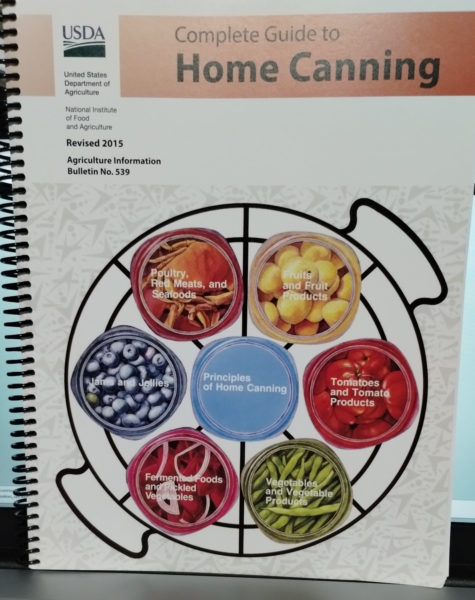I have been planning on canning beef stew for over a week now. Yesterday I did take a couple of roasts out to defrost so it’s going to happen sooner rather than later. During the winter, a bowl of soup or stew and a toasted cheese sandwich is a gourmet meal in my opinion. Because canned soups should not have thickeners in them before canning, I will make a roux, then open the jar and drain the liquid from the jar into the roux, cook that til it’s as thick as I want, then pour the carrots, potatoes and other veggies into the pot of thickened broth.
Even though I’ve canned beef stew for years . . decades really . . I’ll always google “how to can beef stew” because you never know what you might learn watching someone else do it. While I am not saying the canning recommendations we all trust are the “end all be all” to canning, I was surprised to see someone who has done lots of canning videos making beef stew and packing the jars so full that they were almost running over BEFORE adding the liquid. For making soups, the USDA canning recommendations say “Fill hot jars only halfway with a mixture of solids . . ” I’m sure my jars are packed a bit fuller than 1/2 but probably never even 3/4 full so to see those jars jam packed kinda made me want to say “NO!!” but, on the other hand, I get so frustrated when I hear folks telling other folks . . the USDA says to do this or that.

The very same day I watched that video and kept thinking about it, a reader sent me an email with a link to a post about canning resources. One was to Perdue University where a printed and spiral bound book of USDA guidelines can be purchased. All of this information is online but . . will there come a time when the internet is out . . my internet, your internet, everyone’s internet? Just this week, before 6 a.m., our internet went off and it was off til after 3 p.m.
I also recommend the Ball canning books also. I love those but I think having the USDA book printed and where we will have all that info available if we need it is something that makes me feel more comfortable. Just something to think about . .

Tee says
This guide is sold all over, including Amazon ($10.95, instead of $25.50 on the Purdue site). Published in 2015 makes it a bit “old”. For instance, Ball has revised their canning guide many times since 2015. Even though you see the same book at different prices, you have to check the published date to make sure you are getting the latest. They have made changes that affect safety and have corrected errors in printing.
judy.blog@gmail.com says
As far as the USDA guide, I don’t think it’s been revised since 2015. Some historical info has been added to some of the newer printings but most that I’ve seen still say “Revised 2015” even with a newer print date.
I’m not sure what to make of this article as I don’t have a whole lot of admiration for the USDA but I’m usually pretty careful about the guidelines I use.
It does aggravate me that the USDA considers any recipe they have not tested to be unsafe until they prove otherwise and yet, as popular as canning as become, they don’t seem to be doing much testing and revising. Take milk for instance. They say it is not safe to can at home but so many people would love to can milk – why, through the years, have they not tested this very basic “food”?